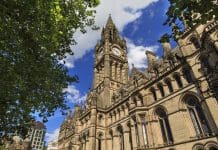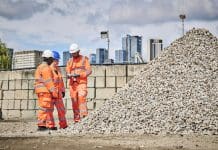An alliance of green building organisations across the globe have released a report detailing how billions can be unlocked for the decarbonisation of buildings
The alliance of green building organisations’ report, Building Transition: How to Scale and Finance an Inclusive Transition for the Built Environment, focuses its research on roughly 75% of buildings that have not adopted green practices.
The alliance consists of the UK’s Building Research Establishment (BRE), the Green Building Council of Australia (GBCA), the Singapore Green Building Council (SGBC), the US Green Building Council (USGBC), and Alliance HQE-GBC France.
The green building organisations say more is needed for sustainability
The report highlights the large contribution that the construction industry makes to carbon emissions. For example, the UK’s construction sector contributes a quarter of the nation’s carbon emissions, so it is vital to decarbonise as quickly and efficiently as possible.
As such, a gap in the industry is identified between “elite” buildings with sustainability hard-baked into design and lower-performing buildings, which make up the vast majority and need retrofit or reconstruction works.
The report details how to free funds to close this gap
The green building organisations report states that this gap can be closed through:
- Policy and taxonomy reform: Stronger policies and taxonomies that direct capital toward underperforming buildings and context-specific, performance-oriented criteria tailored to diverse building types, ensuring investment reaches all buildings.
- Global decarbonisation standards: Defining a credible decarbonisation transition and providing common standards, metrics, and decarbonisation tools that can be used globally while allowing for harmonisation across diverse assets and geographies.
- Resilience in finance: Incorporating adaptation and resilience in real estate finance to account for the impacts of both acute and chronic climate events. Currently, this is not a common practice in real estate finance, and lack of resilience makes lower-performing buildings, the “other 75%,” more vulnerable to becoming stranded assets and suffering from climate impacts.
Jane Goddard, deputy CEO of BRE, said: “Bridging the gap between high-performing and underperforming buildings is essential to achieving our global decarbonisation goals. This report underlines the importance of inclusive investment strategies that unlock capital for the majority of buildings, ensuring that no part of the built environment is left behind. At BRE, we believe that scalable, context-specific solutions—backed by robust data, strong policies, and global standards—are key to transforming the built environment and meeting the urgent challenges of climate change.”














